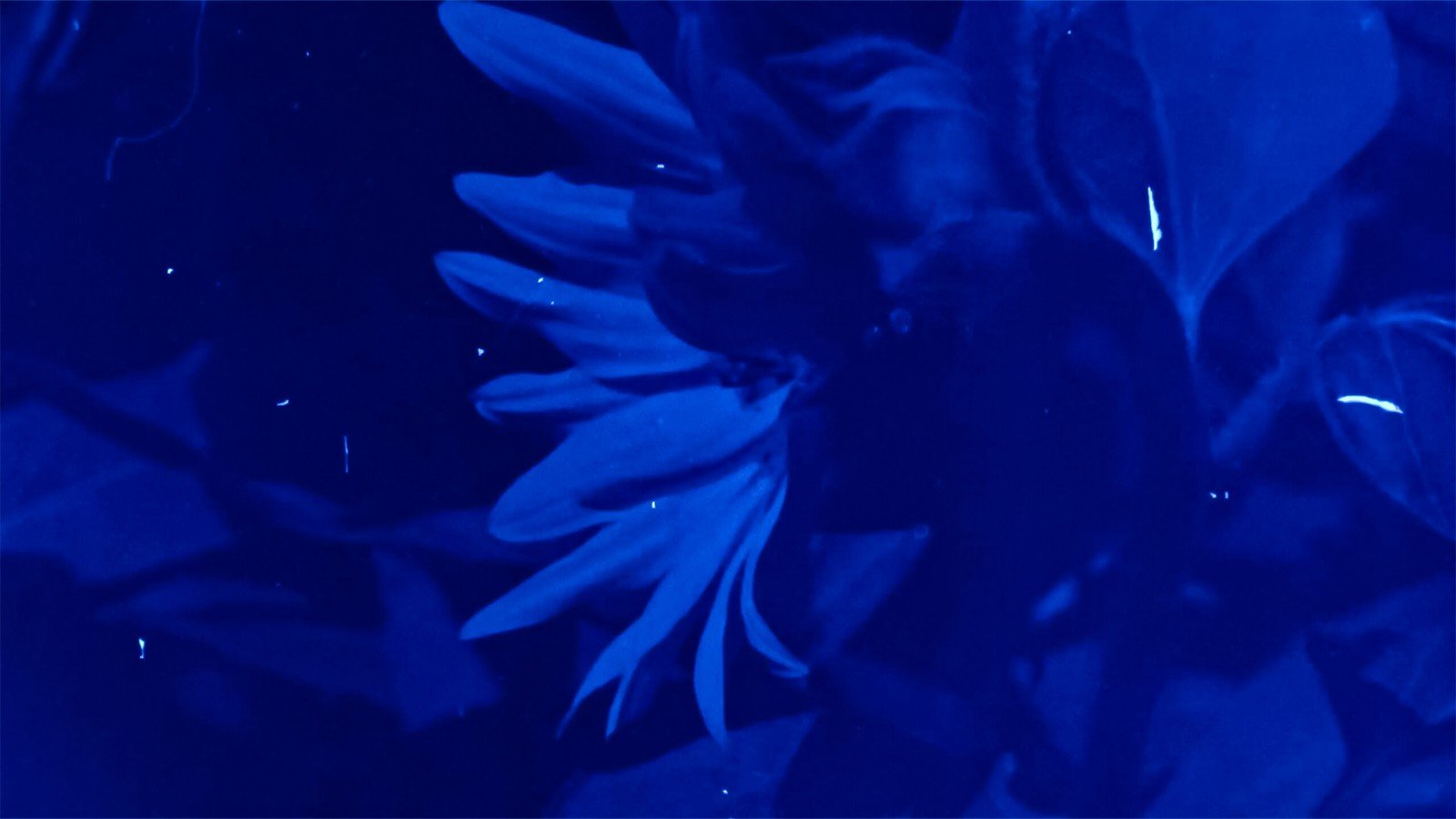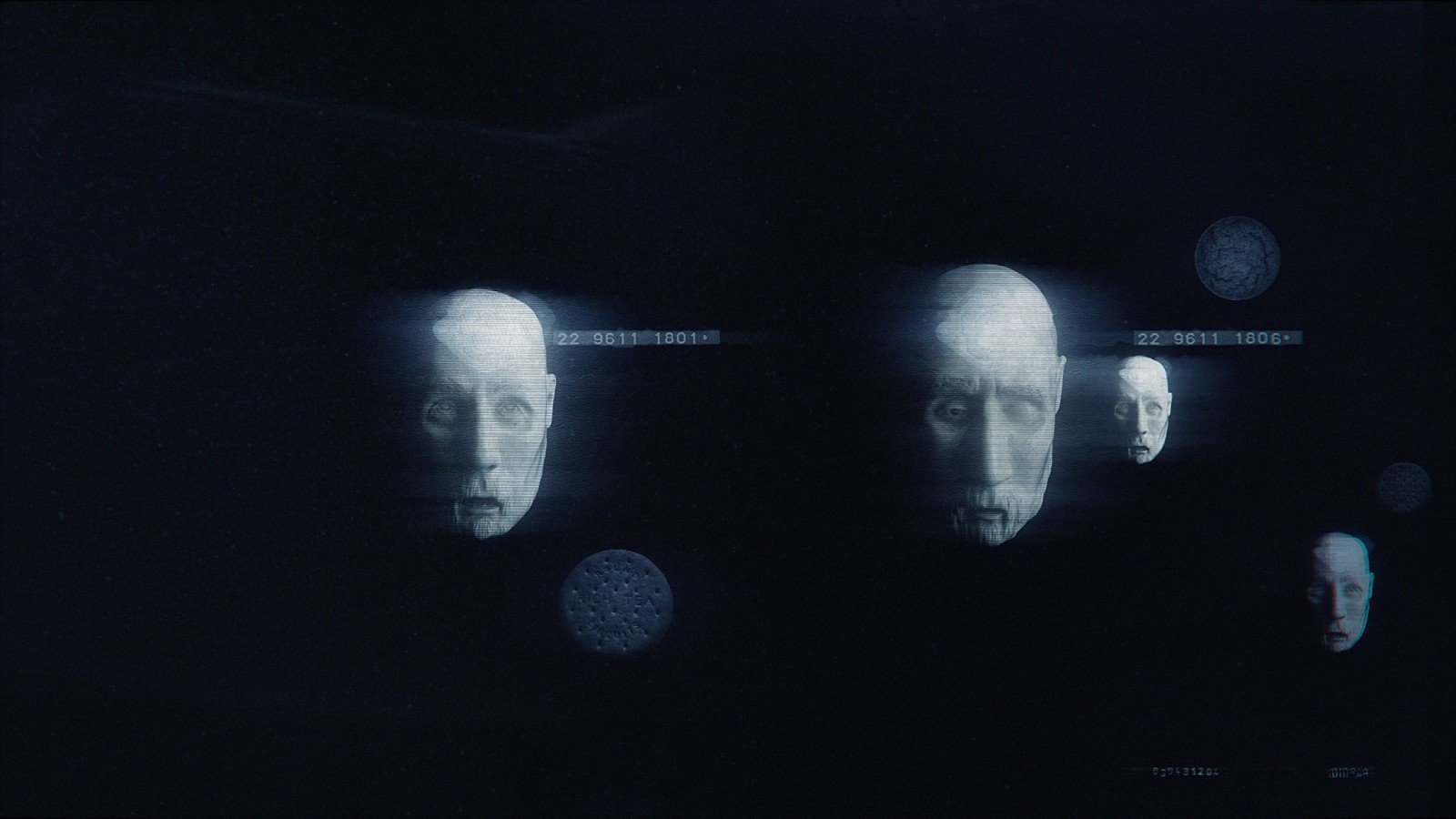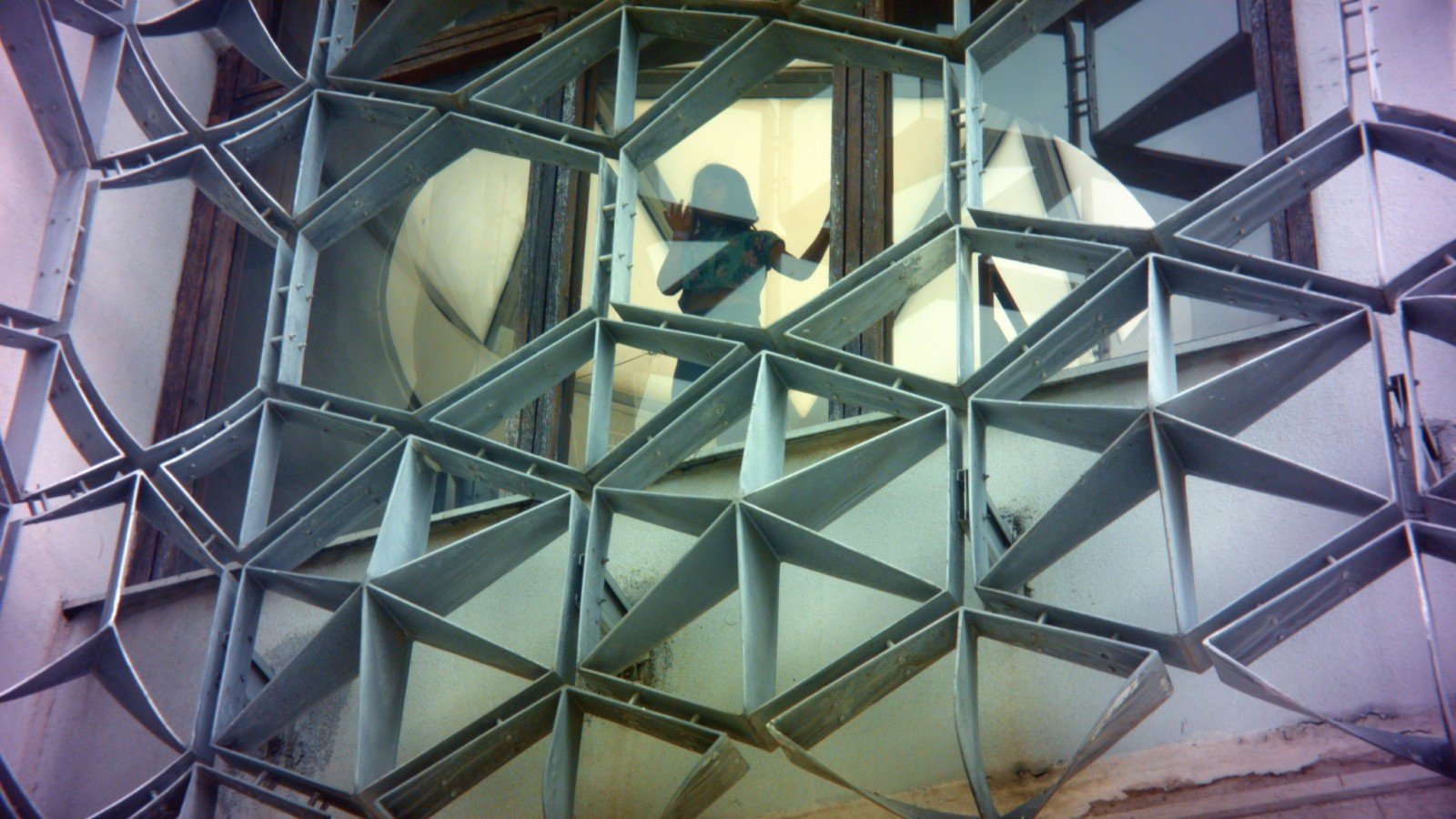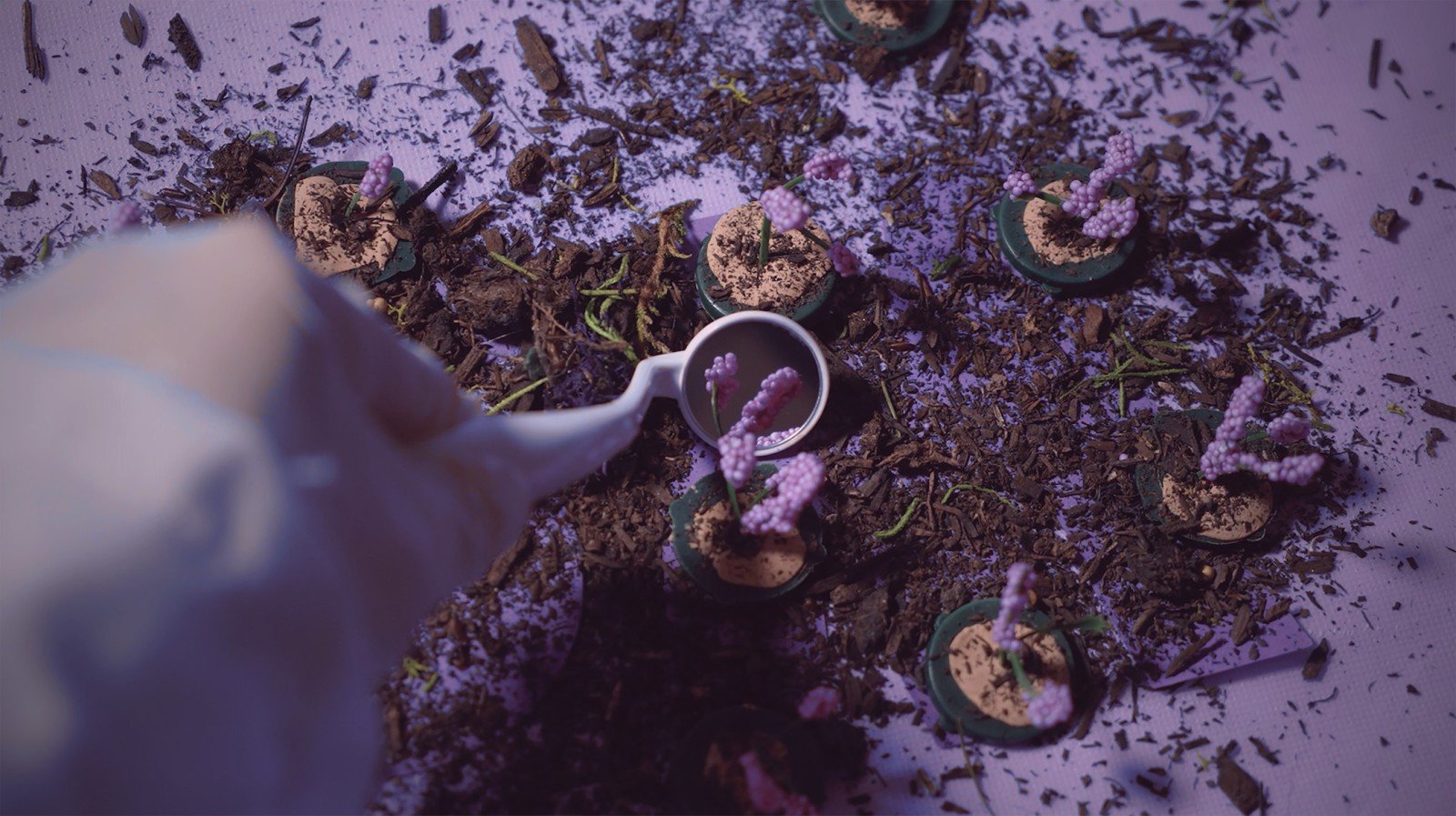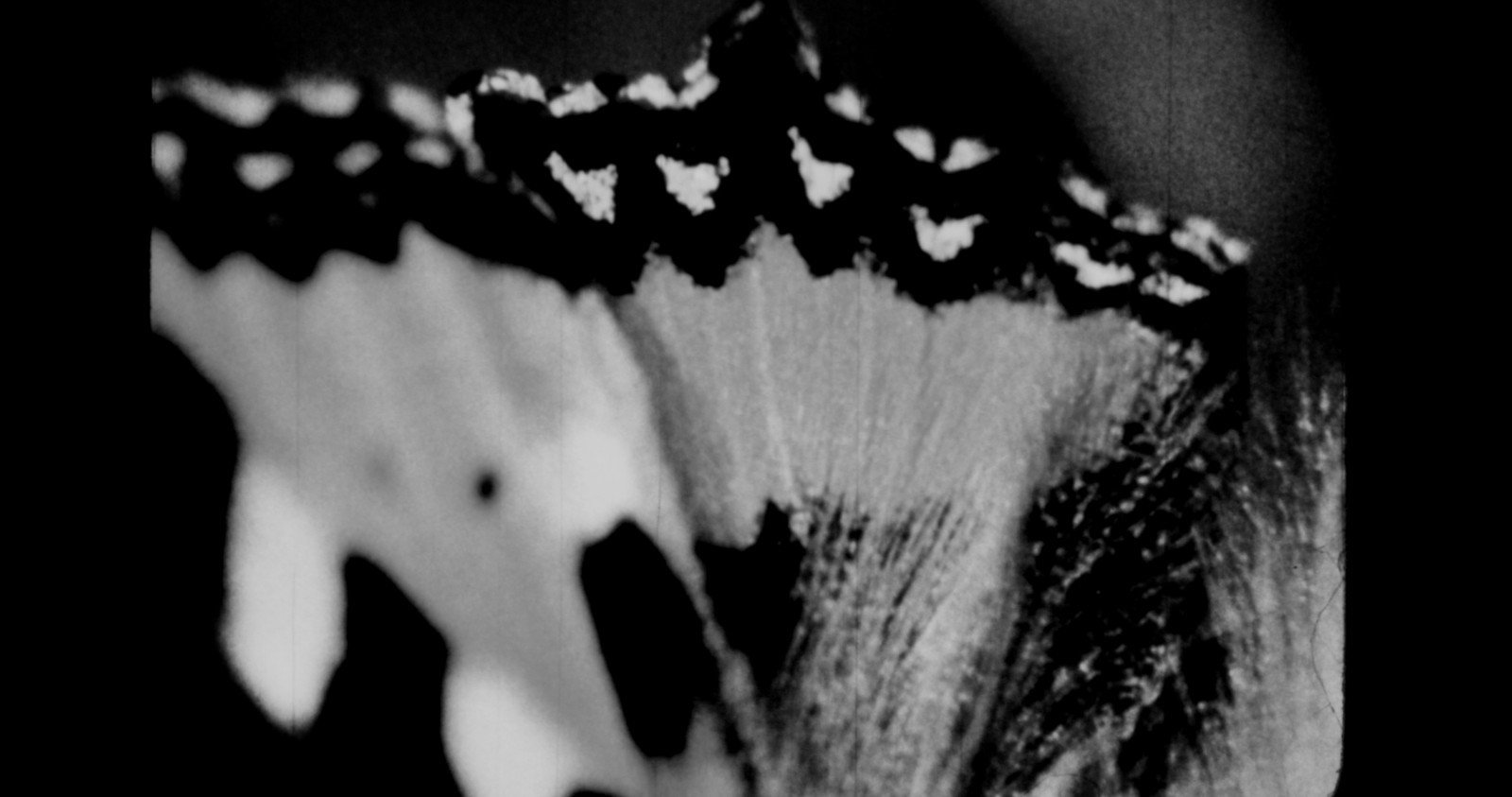Experimental film is often unavoidably political
Fascinations is a section of experimental documentaries presented at the Ji.hlava IDFF, which annually explores unconventional, avant-garde methods of authorial expression in depicting reality. This year's twenty-four films share the theme of dystopian visions and concerns about a bleak future. They present urgent personal and political reflections on the environmental crisis, the exploitation of natural resources, and human labor.
Fascinations are internally diverse programmes of experimental documentaries that annually chart the exploration and testing of unconventional, traditionally avant-garde or innovative modes of authorial expression in the representation of reality. In the spirit of the Ji.hlava festival, they work with references to reality – but these come in various forms: some films recycle documentary images from different eras, some capture a real story or characters, others document an event, a process or an experience.
Each year is surprising in terms of the themes and the form of the films I watch as a curator throughout the year of programme development. In this year's Fascinations programme selection, we encountered six films (out of twenty-four) that deal with possible bleak futures. Dystopian visions and fears became a powerful source of imagination and reflection. They are urgent personal and political reflections, and through artfully constructed arguments, whether through appropriated or original images and sounds, they think through the threats and dangers of our present, such as the environmental crisis, the exploitation of mineral resources and human labour, social inequalities, the suppression of the quieter, of the more discreet, and the forgetting of signs and expressions of identity.
Personal, even intimate films are a typical approach in experimental cinema, be they in the form of diaries, personal essays or narratives on the borderline between documentation and autobiographical fiction. Cecilia Araneda has created an evocation of a phase between sleep and wakefulness (Hypnagogia). The term “traditionally avant-garde” may seem like an oxymoron – but here we see an apt example of it. The artist uses the techniques of hand-developing film material and applying various organic substances to a light-sensitive emulsion, methods widely used in material film since the middle of the last century. However, she updates it using a topic linked to contemporary motifs of the difficulty of falling asleep or experiencing deep sleep.
Diary of a Head Injury explores the state and thoughts following physical and mental trauma. In Dinosaur's Egg, Sruthil Mathew embarks on a journey through the trajectories of ancestors driven from their homes by colonizers. Inheritance is a film-letter, in which Jules Leaño explores the relationship between language and personal identity through a message to her mother, expressed in Tagalog, the Filipino language that represents the author's origins but is one she herself does not speak. She thus seeks to compensate for this by visiting the land of her ancestors. Language and memory are also explored in SAIGON, KOSOVO, but with a completely different creative strategy using fictional elements.
Cultural artefacts as a source of self-determination and personal identity are projected in sonically and musically immersive visual poems: Soulslayer, a graduate film by the exceptional Uzbek film talent Masuma Makhamadalieva, is exhibited as a collage of Uzbek folklore footage, archival films and photographs. The Mexican collective Los Ingrávidos also returns to the programme to present their new film Nahual, using the motif of human and animal pupils and a suggestive percussive score to refer to the ritual of human and animal interpenetration. On the Other Side, Marja Viitahuhta makes Sámi culture and mythology present through music and images of a mythical lake with two bottoms.
Experimental film is often also political. Ever since the early days of found footage films in the late 1950s, the recycling of images has been used to highlight social or political ideas with implications for society as a whole (for example, by dealing with topics such as attitudes towards war and combat, forms of masculinity, social threats). The radical nature of the mode of expression has also been associated with the tenacity of communication since the avant-garde period of the 1920s and 1930s. Insignificant Specks of Dust in a Tapestry of Stars critically looks at the dependence of the idea of progress on the necessity of mineral extraction through appropriated footage of men crushed by the harsh working conditions of illegal precious metal mining in Africa.
Miss Kim Lilac refers to an unreflected taxonomic gesture of the time, when an American botanist gave a lilac transplanted from Korea this pejorative archaic term denoting a helpful woman, secretary, servant. The image of the woman is deconstructed and reassembled by Betty Blitz in OVERALL. Unique private footage of army pilot training is disturbed in the editing of Butterfly Maneuvers by the awareness of the realism of the rehearsed combat situations.
Found footage, or working with footage appropriated from diverse sources, is widely represented in experimental cinema, and also in this year's programme. For example, space_invaders.exe is a parody dystopia on the topic of displacement. The spirited hybrid opera The Architect Carla is another dystopian reflection, in this case with themes of destruction and building. In the tradition of metaphorical compositions, Carbonpunk Love combines footage from documentary and fictional films into an explosive collage.
In curatorial work, the question always arises how to relate to the work of artists that we have been following or presenting for a long time – should we prioritize the experience of a new audience and present a piece that is interesting but formally does not represent a shift in their work? When it is just recycling or even copying previously used methods, or another piece of the puzzle of one large and formally consistent work? In our ongoing dialogue with the artists throughout the year, we prefer to encourage them to seek new creative forms of expression because we know that they are unique and that their thinking and vision can give rise to exceptional and innovative work. However, some echoes of practices already in use present a dense viewing experience as well as a refinement of the creative method.
„New emphases or masteries may appear even in a familiar creative process.”
In this year's selection, we see the previously used approaches of Jean-Michel Rolland (the miniature Vagues à l'âme), Péter Lichter's typical work with the film images in The Geneva Mechanism: A Ghost Movie, or the widely used practice of cutting out moving elements through experimentation with video mapping tools (Divisoria). But we also see a completely new authorial positioning for Madi Piller, an artist who has been dealing with questions of identity and memory for decades, exploring them through her own peripatetic family history, and this year building spatial arrangements of real and imaginary elements through a distinctly visual study of landscape (The Equation of Unbalanced Spaces). Spatial relationships and devaluations are also explored by Thomas Kutschker in back and/or forth.
New emphases or masteries may appear in a familiar creative process. Working with photographs is one of the basic creative strategies of experimental (and other types of) film. Hoolboom's choice of images in his latest film, Promises, and his ingenious work with rhythm and the sequencing of photographs allude to his early “stolen footage” works, which advanced the whole genre of recycling film images. In particular, his sensitivity to the choice of moments, facial expressions, overlapping elements, immanent situations and halted gestures render not only dramatic, almost poignant promises of stories, but moving and beautiful ones as well.
The videos that were first exhibited in the gallery include two complex and visually powerful works. Beacons is based on messages delivered in 1985 at a conference of artists, curators, and cultural diplomats held in the former Yugoslavia, that emphasized themes of self-determination and autonomy for cultures of the Global South. The author Jasmina Cibić has selected sites in the Balkans where distinctive works of modern architecture stand, solitary towers surrounded by nature. She approached singers, musicians and other artists, with whom she created performative situations that transpose messages of autonomy and self-awareness into gestures of architecture, music and words.
Chronicles of the Dark Sun work with materials from various sources and build a partly fictional story from them, through which they emphasize the motives of societal threats, especially environmental ones, in contemporary documentation of life, consumption and scientific progress. The plot, whose rendering is inspired by Chris Marker's film La Jetée, follows the story of a woman from childhood to old age, in a world where people had to outshine the Sun, which turned the Earth into an arid desert and started water wars. People then commissioned artificial intelligence to simulate the world with the sun for them.
The appearance of the images is partly created by the involvement of several tools using artificial intelligence. The work functions not only as a narrative, but also as a layered reflection, in which the images are what is talked about and thought about. I found the film at an exhibition in Vienna's Kunsthalle, which was related to the Sun as a source, threat and inspiration. With some of the videos in the gallery, you can see how urgently they “talk” to be watched in their entirety and from beginning to end – the way of presentation in the cinema will therefore allow this film to be perceived linearly.


